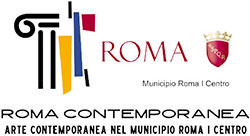Emanuele Malassisi
Fragments
Emanuele Malassisi was born a genius, an artist who trained and educated himself to perfect his technique. The artist is evidently a lover of faces and figures, just as Van Gogh was; he also shares with the great Dutch artist an attachment to natural reality. Through his art, Emanuele seeks to communicate with his peers simply and directly, using a language that is understandable and accessible to all. But his instinct and intuition propel him into a lofty, alienating universe, and he inadvertently, yet consciously, penetrates the mystery of life and death. The game is refined and subtle. There is no doubt that Malassisi the man walks a tightrope, suspended between the concrete world and the other dimension that mirrors, refracts, and shatters reality. Precisely in the blurring of these two existences, we come to perceive the truth and sacredness of life in its mystery, which becomes tangible and compelling. The artist's mind opens and allows invisible powers to touch our lives: thus the enchantment of great art unfolds. The love of Nature and the obsessive pursuit of it, as the only possible pleasurable and comforting certainty, animate the works of this magnificent artist; the forests seem to possess faces that slowly dissolve into fluctuating identities, a whirlwind of air currents passes through another face that becomes even stronger as it blurs: identity resists the onslaught of uncertainty and instability thanks to an impeccable, steely discipline and method. In the self-portrait, an empty chair is reflected in a puddle where, miraculously, the shadow of a seated man appears. Only his hands, tireless instruments of creativity, are clearly visible. I'm reminded of Van Gogh's declaration of his unflagging and tenacious love for life and art, despite the threat of schizophrenia. In German Expressionist cinema, the shot of a puddle or a mirror was used to reveal a secret action that needed to be revealed or a hidden identity that needed to be revealed. Emanuele, following this approach in his self-portrait, gives us the imprint of his being, the trace from which we can trace his deepest self. Malassisi's dialogue with death and the dissolution of the individual as the protagonist, master of his own life, is constant and marks his entire artistic journey: the skeleton gazing fixedly at the rose, almost in silent conversation, whose beauty is destined to fade, is a sublime example, a memento mori in the guise of masterful contemporary illustration. The artist also achieves a firm desire to mimic the animal world: one woman transforms into a beautiful peacock, while another into a Doberman, as if the other identity or totemic spirit wishes to make its voice heard. It is no secret to the privileged people who frequent Malassisi that he lives in a home in complete harmony and affinity with the animal kingdom. Today, the only authentic salvation available to sensitive humankind, to escape the onslaughts of a cold and indifferent society, is to blend into nature, the home of our origins. Emanuele cannot be read and interpreted through a single work; each piece forms a visual narrative that testifies to the power and energy of the whole; in this, he is truly an illustrator. Each image is a magical tile in an immense sacred mosaic, and one of his "illustrations" depicts a person whose form and expression are not clearly discernible because it is composed of so many tiny pieces. Within the artist resides a religious sense of life, a search for a universal brotherhood of individuals, peoples, and cultures, which aims to build an endless gallery of faces in an imaginative and reflective temple of faith in a better world.
Giuseppe Ussani d'Escobar


